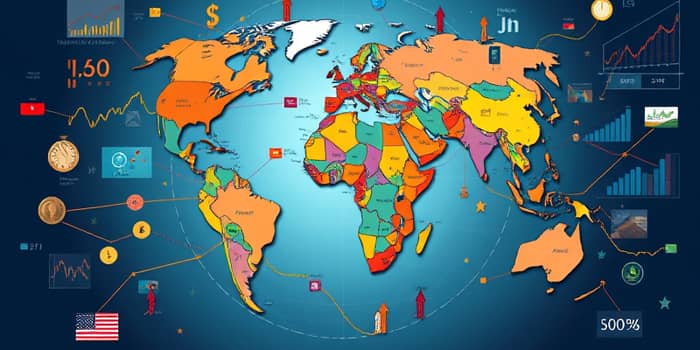
Investors often fall prey to the familiar comfort of their own domestic markets, leading to a pronounced home bias. This tendency can leave a portfolio overly exposed to single-country economic cycles, regulatory changes, or local political upheaval. By consciously expanding beyond national borders, you can access new opportunities and shield your assets from the fallout of localized downturns.
The core premise is straightforward: portfolio resilience during localized downturns is greatly enhanced when you tap into markets that don’t move in lockstep with your home country. Rather than relying solely on domestic multinationals or revenue streams, true international diversification requires direct ownership of foreign securities. This approach can unlock benefits that might otherwise remain out of reach.
Investing across multiple regions offers distinct advantages. When markets diverge, losses in one geography can be offset by gains elsewhere. Moreover, various countries experience growth spurts at different times, enabling investors to ride multiple economic waves instead of a single domestic tide.
Academic and professional studies consistently underscore the merits of going global. Researchers have found that portfolios blending developed and emerging market equities often register Sharpe ratios materially higher than those of single-country allocations, especially when currency risk is strategically managed. In one review, six out of eight developed markets achieved lower volatility through international diversification alone.
Data spanning 1997 to 2002 reveal that global mutual fund assets in nations such as Brazil, Canada, and Korea surged significantly—Brazil jumped from $1.5 billion to $2.7 billion. These trends reflect a broader investor migration toward diversified international holdings, borne out by the lower aggregate volatility of global indices compared to many individual markets.
While there’s no universal rule, many financial experts advocate allocating between 20% and 50% of equity portfolios to international markets. This range balances the benefits of diversification against potential costs and complexity. Allocations toward the lower end may provide some cushion but can leave a portfolio underexposed, whereas very high allocations may introduce diminishing marginal benefits.
Maintaining strategic currency management and rebalancing is critical. Investors can choose between hedged international funds, which aim to neutralize foreign currency swings, or unhedged options that offer additional upside when foreign currencies appreciate. Regular portfolio reviews help ensure allocations remain aligned with target exposures as market values shift.
Some critics argue that mean returns abroad don’t always outpace domestic markets. However, the true metric of success often lies in risk-adjusted performance rather than raw gains. direct international securities are essential because relying on domestic multinationals with foreign revenue fails to capture the full effect of market diversification and separate trading dynamics.
Transaction costs, taxes, and regulatory hurdles can also concern investors. Yet with today’s global brokers and low-cost ETFs, these barriers have fallen. Due diligence on fees and tax implications remains vital, but the net positive impact of international exposure persists for those who plan carefully.
International investing is not without challenges. Political instability, differing accounting standards, and less transparent regulatory environments can elevate risks. Investors should remain vigilant through continuous research and by selecting reputable fund managers or platforms that offer robust risk controls.
A thorough understanding of regional dynamics—such as a country’s monetary policy stance or sector concentration—helps anticipate potential shocks. Combining quantitative analysis with on-the-ground perspectives ensures a well-rounded view of each market’s prospects.
Reducing local risk demands more than surface-level exposure to foreign revenue streams. By intentionally allocating a meaningful portion of your portfolio to direct international securities, you can build a more robust and adaptable investment strategy. While risks remain, the potential rewards of lower volatility and improved risk-adjusted returns have been validated time and again.
References













